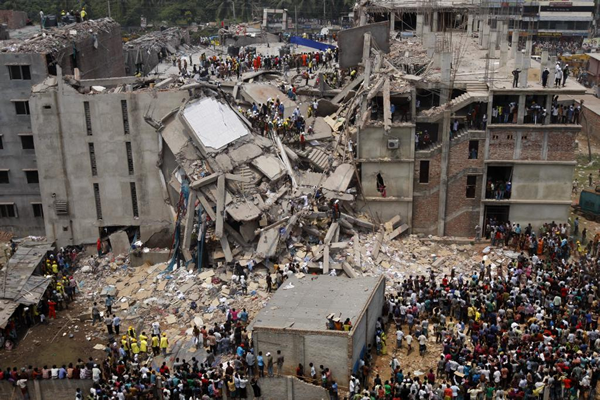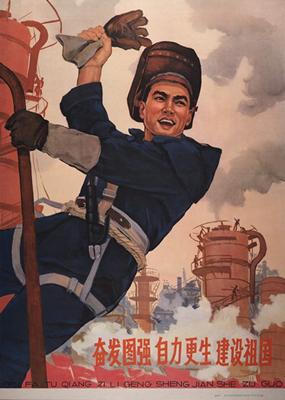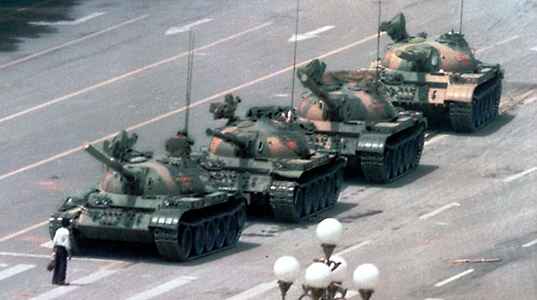Who’s Counting? Women’s Rights in a Globalized World
Section 1: Introduction
You should notice that this area looks different from the rest. This is because its subject matter, women’s rights in a globalized world, transcends national boundaries. Issues that impact women in, for example, Korea, are not necessarily the same for women in Canada. Women in one region of the world may enjoy high literacy rates, while women in another region are denied education altogether. Furthermore, these differences are not easily accounted for; in fact, some regions where some women’s rights are restricted provide other opportunities that exceed those available to women in “free” societies.
In this area, you will be presented with evidence about women’s rights in industrialized, industrializing, and non-industrial nations. As you read each, decide whether it is an example of progress or decline by dragging the evidence to the right (progress) or left (decline). Note that each piece of evidence will still be identified as industrialized, industrializing, or non-industrial; thus, when you are done, you will be able to quickly view larger trends for women across disparate regions of the world.
Section 2: Reproductive technology
Throughout history, various techniques had been used to limit the possibility of conception. Two key inventions--condoms made from vulcanized rubber in the 19th century and the birth control pill of the 20th century--had great impacts on social norms. In particular, the birth control pill has allowed millions of women to choose paths that were previously impossible for them.
Reproductive Technology: Industrialized Nations
In the United States there are now more women in professional work than any other sector. According to a 2010 Forbes article, numerous factors contributed to this shift:
It was a generation of college-educated women who rejected the prospect of following in the footsteps of their moms, spending their adult lives as housewives; it was companies that increasingly needed and sought women’s white-collar office skills and an economy that required both men and women to earn an income.
But it was also due to a tiny but powerful enabler no bigger than a pinky nail: the birth control pill.
Reproductive Technology: Non-Industrialized Nations
According to the New York Times in 2015, 867 million women in developing countries want to avoid pregnancy, but approximately 222 million cannot get access to birth control. Source
The United Nations Population Fund (UNPF) notes that most of these women are from the world’s poorest countries. Access to birth control not only limits the impact of births on poor families, but also provides women with an opportunity to work or to receive an education. According to the UNPF, “If all women with an unmet need for contraceptives were able to use modern methods, an additional 24 million abortions (14 million of which would be unsafe), 6 million miscarriages, 70,000 maternal deaths and 500,000 infant deaths would be prevented.” Source
The UNPF has had some success in increasing contraceptive use in Haiti and Burundi, where it serves more than 80 000 and 631 000 people respectively.

A woman in Myanmar receives information about family planning. UNFPA Myanmar.
Source
Section 3: Issues in the industrializing world
Women in Industrialized Canada
Canadian women enjoy numerous rights under the law, and score very highly in secondary and postsecondary education. In 2008, 60% of university graduates in Canada were women. Of the major fields, only three have more male graduates than female; one of those, personal, protective, and transportation services, saw the percentage of women enrolled jump from 18.2% in 1992 to 44.9% in 2008. Yet, Canadian women still encounter barriers. Some have encountered the “glass ceiling,” a metaphor used to describe invisible barriers that make it difficult for women to move into positions of power. In March 2016, only 18% of senior corporate positions were held by women. In 2016, educated Canadian women were still paid less than their male counterparts. The 2006 Census of Population by Statistics Canada reveals that 30 to 34 year-old university-educated women have a median income that is $3000 to $15 000 lower than males, depending on the field. On average that works out to women earning 73 cents for every dollar that men earn. According to the World Economic Forum, Canada ranked 35th in the 2016 gender gap ranking. This ranking examines economic participation and opportunity, educational attainment, health and survival and political empowerment. Source
Women in Industrializing Iran
Women in Iran do not enjoy the same rights as many women around the world. For example, Iranian lawyer Narges Mohammadi was sentenced to 16 years in prison as an activist pushing for more rights for women. She was found guilty of “gathering and conspiring with the aim of committing crimes against national security”. Source. Women are banned from a number of activities, including watching men’s sports in stadiums. However, the rate of education for women in Iran is very high, with 62.2% of women who are 25 years or older having some post-secondary education. On the other hand, women have a much lower participation rate in the economy and hold a fraction of the parliamentary seats.
Women in Non-Industrial Bangladesh
Even areas that have not fully industrialized have felt the impact of globalization. Bangladesh has a large garment factory sector. Almost all of the clothing is for export to Europe and North America for “fast fashion” stores such as H&M and Gap. The workers in this sector are 85% female. This industry provides many jobs and accounts for about 10% of the country’s GDP. However, the women are vulnerable in many ways: they are paid low wages, work in unsafe conditions, and have just gained access to unions, union leadership, and paid maternity leave. In 2013, an eight-story building known as Rana Plaza, used for garment production and other commercial enterprises collapsed, killing 1 129 people. Women not only were the majority of those killed, but also are the majority of those still owed compensation for the collapse from international clothing brands.

2013 Savar building collapse, Bangladesh.
On Wednesday, 24 April 2013 in the Savar Upazila of Dhaka, Bangladesh where an eight-story commercial building named Rana Plaza collapsed. The search for the dead ended on 13 May 2013 with a death toll of 1,129.
Photo by rijans.
Source
Women in Non-Industrial Rwanda
Rwanda is one of the poorest countries in the world, yet it has the highest percentage of women in government. This change is in part due to the 1994 Rwandan Genocide, which decimated the male population, especially leaders. For example, of the 780 judges before the genocide, only 20 survived the bloodshed. Now, Rwandan law mandates that 30% of all parliamentary seats be reserved for women; in 2013, however, 64% of parliamentarians were female, meaning that the representation of women more than doubled the mandate. Source

Rwanda's parliament – the first in the world where women hold a majority.
Photograph: The Washington Post/Washington Post/Getty Images
Female Genital Mutilation: Non-Industrialized Nations
Female Genital Mutilation, or FGM, is practiced in parts of Africa, the Middle East, and Asia. It is carried out on girls ranging from infancy to 15, and involves the damaging or removal of external female genitalia. It can cause severe bleeding and pain, and increases the likelihood of infection, cysts, problems at childbirth, and newborn deaths. Over 200 million girls and women alive today have been subjected to FGM. According to the World Health Organization, FGM “reflects deep-rooted inequality between the sexes, and constitutes an extreme form of discrimination against women. It is nearly always carried out on minors and is a violation of the rights of children. The practice also violates a person's rights to health, security and physical integrity, the right to be free from torture and cruel, inhuman or degrading treatment, and the right to life when the procedure results in death.” Source
In 2009, the government of Uganda passed a law banning female genital mutilation. The punishments for breaking the law are significant: a person convicted can face ten years in prison, or life in prison if the practice causes disability, the spread of HIV/AIDS, or death.
 Impacts of Industrialization and Ideology
Impacts of Industrialization and Ideology











